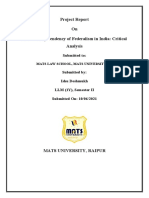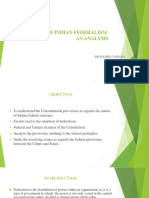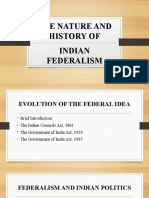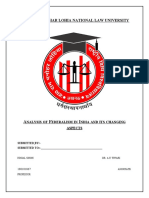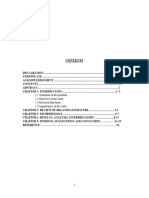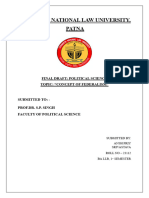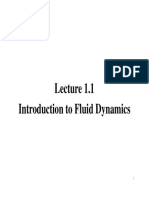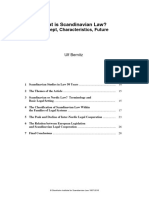0% found this document useful (0 votes)
21 views5 pagesAbstract
This document provides a summary of a research paper on federalism in India. It discusses the meaning of federalism and traces its historical evolution in India from British rule to the current constitution. It analyzes challenges to India's federal system, including the division of powers between central and state governments. It assesses whether India's federal structure effectively governs the country, given judicial interpretations that emphasize centralized tendencies. While India's federalism is not purely federal, the system strives to balance unity and regional autonomy.
Uploaded by
dwd5kcsh6tCopyright
© © All Rights Reserved
We take content rights seriously. If you suspect this is your content, claim it here.
Available Formats
Download as DOCX, PDF, TXT or read online on Scribd
0% found this document useful (0 votes)
21 views5 pagesAbstract
This document provides a summary of a research paper on federalism in India. It discusses the meaning of federalism and traces its historical evolution in India from British rule to the current constitution. It analyzes challenges to India's federal system, including the division of powers between central and state governments. It assesses whether India's federal structure effectively governs the country, given judicial interpretations that emphasize centralized tendencies. While India's federalism is not purely federal, the system strives to balance unity and regional autonomy.
Uploaded by
dwd5kcsh6tCopyright
© © All Rights Reserved
We take content rights seriously. If you suspect this is your content, claim it here.
Available Formats
Download as DOCX, PDF, TXT or read online on Scribd
/ 5







